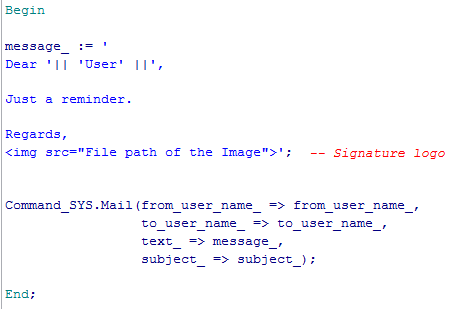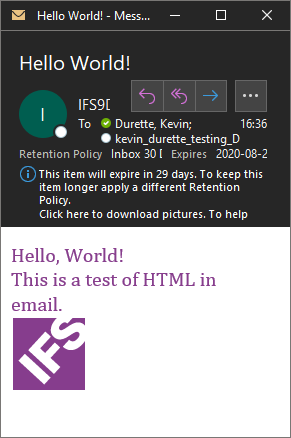Can anyone share your views on implementing the solution of including logo in an email signature triggered from IFS?
I am planning currently to achieve this with the use of html <img src> tag in plsql code and give the file system path of the image and the solution is working with an example code below, For the above solution, I need to change the content type of the mail sender to text/html from text/plain.
Also, as per outlook default settings html embedded images are not getting downloaded automatically and user has to download it manually by doing right click to see in the signature and again this settings in outlook needs to be changed. Is there any other better or standard IFS way to achieve this?



